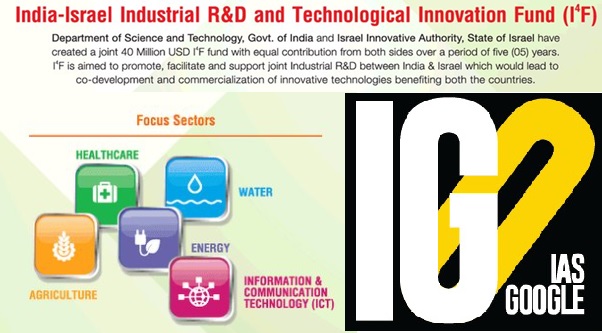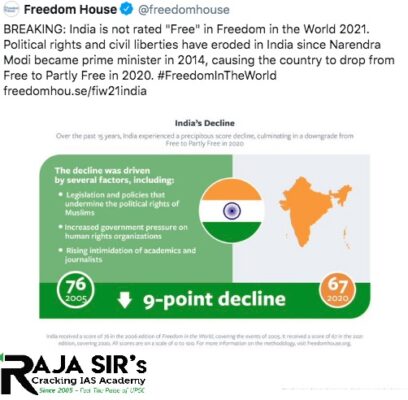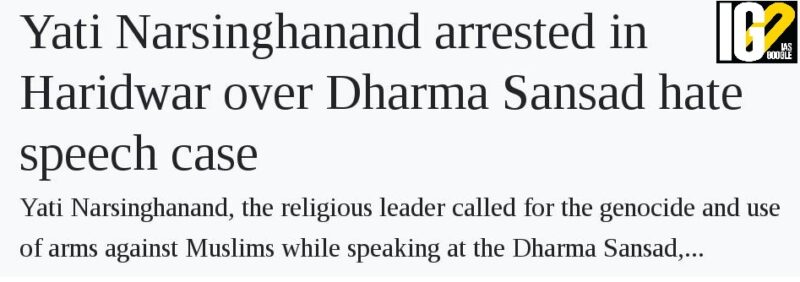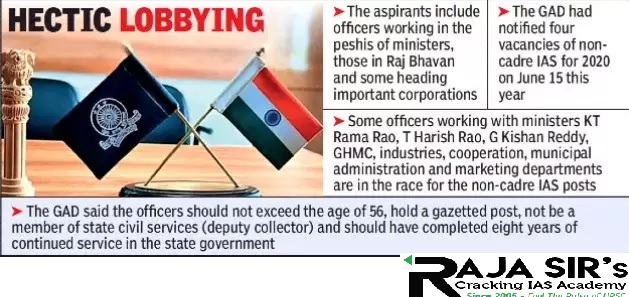- Home
- Prelims
- Mains
- Current Affairs
- Study Materials
- Test Series
Jan 22, 2022
GLOBAL CYBERSECURITY OUTLOOK 2022
The World Economic Forum has recently launched a report entitled ‘Global Cybersecurity Outlook 2022’, at their annual Davos summit.
 Findings of the report:
Findings of the report:
 The projects were
The projects were
 Indian Renewable Energy Development Agency Limited (IREDA):
Indian Renewable Energy Development Agency Limited (IREDA):
 What is the ‘Justice Clock’?
What is the ‘Justice Clock’?

 Objectives of Guidelines:
Objectives of Guidelines:
 Freedom of Media & Democracy:
Freedom of Media & Democracy:

 Issue:
Issue:
 Findings of the report:
Findings of the report:
- The accelerating pace of digitalization has led to a record-breaking year for cybercrime.
- 41% business executives believe that cyber resilience is integrated into enterprise risk management strategies while 13% of cyber leaders feel confident that their organizations are cyber resilient.
- Recruiting and retaining cybersecurity talent: There is a gap in the cybersecurity due to shortage of skills and lack of adequate personnel, leaving the company vulnerable to attacks.
- Ransomware attacks, social-engineering attacks and malicious insider activity are the top three cyberattacks most organizations are concerned about.
- Cyber resilience of small and medium businesses (SMBs) is seen as a critical threat to supply chains, partner networks and systems.
- It is believed that automation and machine learning will introduce the biggest transformation in cybersecurity in the next two year.
- Clear and productive regulations are needed, that would allow and encourage information sharing and collaboration.
- Cybersecurity must be prioritized in all domains of society and the economy.
- The cyber framework of a country should promote stronger cyber-resilience position rather than cyber-defensive posture.
 The projects were
The projects were
- Centrally monitored IoT Nano sensors for molecular diagnostics in healthcare and screening applications.
- No More Mos- a mosquito control biological solution.
- IoT enabled satellite communication for real-time collection of agriculture and environment data across India.
- I4F fund is a cooperation between the Department of Science and Technology (DST), India and the Israel Innovation Authority, Israel.
- Aim: To promote, facilitate and support joint industrial R&D projects between companies from India and Israel to address the challenges in the agreed focus sectors.
- Implementation (in India): Global Innovation & Technology Alliance (GITA).
- It mandates the NOC holders to make provision for providing information on customer care service, tariff plans, etc.
- Provision has been made to strengthen billing and consumer grievance redressal mechanism to facilitate time bound resolution of grievance by the NOC holders.
- It also streamlines the application process for the NOC holders in line with the other licenses/ registrations etc.
- It enables a mobile user to automatically make and receive calls, send and receive data, or access other services when travelling outside the geographical coverage area of their home network.
 Indian Renewable Energy Development Agency Limited (IREDA):
Indian Renewable Energy Development Agency Limited (IREDA):
- Established in 1987
- Mini Ratna (Category – I) Company, under Union Ministry of New and Renewable Energy (MNRE).
- Motto: “Energy For Ever”
- Function: It promotes, develops, and extends financial assistance for Renewable Energy and Energy Efficiency/Conservation Projects.
 What is the ‘Justice Clock’?
What is the ‘Justice Clock’?
- The Justice Clock, an LED display, will exhibit vital statistics of the justice delivery system in Gujarat.
- Objective: To “maximize outreach and visibility” of the work done by the state judiciary.
- It allows advocate and parties to procure judicial stamps online through electronic payment.
- The platform now stands expanded to all district and taluka courts.
- The e-courts mission project, guided by the Supreme Court e-Committee as part of the National e-Governance Plan (NeGP), began the digitization of Indian courts.
- Objective: To create a more accessible, inexpensive, dependable, and transparent judicial system.
- The e-Courts initiative has so far been divided into three phases:
- It was primarily concerned with hardware installation, or the computerization of the courts
- Objective: To extend specialized services to litigants, advocates, and the judiciary by computerizing all district and subordinate courts.
- The main aim of Phase II was the betterment of software of the digital infrastructure.
- The implementation of Phase III is yet to begin.
- The primary goal is to establish an “ecosystem” model in which systems interact with one another.
- The document proposes a digital case registry, a database of case laws, intelligent scheduling, a digital case management framework, e-filing, and open digital proceedings.
- Online platforms provide basic legal services ranging from trademark registration, registration, and execution of wills, leases, contracts.
- E-filing of cases
- Digitalization of court records
- Online court proceedings
- Lack of digital education among the help desks of court
- Lack of motivation among help desks to upgrade to a more advanced digital infrastructure
- Automation is still not common.
- Develop a policy that encourages the establishment of more skilled help desks.
- It is vital to have a well-defined and pre-determined policy framework since it will aid in the development of a definite roadmap and direction for India’s e-courts system.
- The government must identify and create the necessary infrastructure for a better functioning automated help desk service.
- To manage all of the e-data, the government must invest significant resources in workforce training.
- These include keeping accurate records of notification, summons, warrants, bail orders, order copies, e-filing, and other similar activities for future reference.
- Increasing awareness of e-Courts through speeches and seminars can help bring the benefits and convenience that e-Courts can provide in the limelight.

- Denison barb (Miss Kerala) is a native freshwater fish species.
- They are commonly found in parts of Karnataka and Kerala.
- It is commonly seen in the aquarium trade; pet collection caused it to become endangered and is its single major threat.
 Objectives of Guidelines:
Objectives of Guidelines:
- To serve as the basis for rural transformation and enable effective Land use planning in rural areas.
- To ensure ease of living in villages by providing all necessary infrastructure and facilities.
- Typology of villages to prepare the spatial development plan (population, agro-climatic zones, Hill areas, disaster occurrence, urban-peri-urban areas and villages)
- Dealing with different development Land Use standards for different areas, with varied characteristics.
- To facilitate the planned spatial development of rural areas.
- Village Town Planning Scheme (VPS)– through community based on Collaborative Planning.
- Planning for environmental benefit and disaster preparedness.
- Improving the E-Governance through Spatial Data Infrastructure (SDI).
- Most importantly using the SVAMITVA (and other digital tools) for Abadi area (linking to land records).
- Survey of Villages and Mapping with Improvised Technology in Village Areas (SVAMITVA) is an initiative of the Ministry of Panchayati Raj.
- It is a Central Sector Scheme.
- Aim: To provide rural people with the right to document their residential properties so that they can use their property for economic purposes.
- Creation of accurate land records for rural planning
- Determination of property tax
- To reduce property related disputes and legal cases
 Freedom of Media & Democracy:
Freedom of Media & Democracy:
- Freedom of the media is the principle that communication and expression should be considered a right to be exercised freely.
- Such freedom implies the absence of interference from an overreaching state; its preservation may be sought through constitution or other legal protection and security.
- A free media helps in smooth functioning of democracy by dissemination of ideas, information and knowledge and debate.
- It puts forward the grievances of people and question the decisions of the government and make it accountable.
- Free media is the voice of the masses empowers them with the right to express opinions, thereby strengthening the democracy.
- The Indian Constitution guarantees freedom of speech and expression under Article 19.
- Freedom of the press is not expressly protected by the Indian legal system but it is implied under article 19(1) (a) of the constitution.
- However, a law could impose restrictions on the exercise of this right under certain prescribed circumstances.
- Unauthentic news, paid news, advertising editorials and influenced news are threats to free and unbiased media.
- Corporate and political power compromise freedom of press by having vested interests in large sections of the media.
- Rising violence against unbiased and true journalists is the most imminent threat facing press freedom.

- These were arrested for hate speech during “Dharam Sansad” in Haridwar and for making derogatory remarks against women of a particular community.
- Speakers, in event organized in Delhi, called for the “genocide of members” of a community.
- It is an international treaty that criminalizes genocide and to enforce its prohibition.
- It was conceived largely in response to World War II, which saw atrocities such as the Holocaust that lacked an adequate description or legal definition.
- It was the first legal instrument to codify genocide as a crime, and the first human rights treaty unanimously adopted by the United Nations General Assembly, in 1948.
- The Convention entered into force in January 1951 and has 152 state parties.
- India ratified the convention in 1959.
- Article 2 of the Convention defines genocide as any of the following acts committed with intent to destroy, in whole or in part, a national, ethnic, racial or religious group, as such:
- Killing members of the group
- Causing serious bodily or mental harm to members of the group
- Deliberately inflicting on the group conditions of life calculated to bring about its physical destruction in whole or in part
- Imposing measures intended to prevent births within the group
- Forcibly transferring children of the group to another group.
- Article 3 defines the crimes that can be punished under the convention:
- Genocide
- Conspiracy to commit genocide
- Direct and public incitement to commit genocide
- Attempt to commit genocide
- Complicity in genocide.
- Article 4 states that punishments are to be awarded to guilty persons irrespective of their official positions and to both public and private individuals.
- Persons charged with genocide enumerated in article III shall be tried by a competent tribunal of the State in the territory of which the act was committed, or by international penal tribunal as may have jurisdiction with respect to those Contracting Parties which shall have accepted its jurisdiction.
- Any Party may call upon the competent organs of the United Nations to take such action under the Charter of the United Nations for the prevention and suppression of acts of genocide or any of the other acts enumerated in article III.
 Issue:
Issue:
- The amendment is being done to exercise greater control in the central deputation of Indian Administrative Services (IAS) officials.
- Deputation of IAS officials has been a long point of tussle between the Centre and the states.
- Department of Personnel and Training said that:
- Many state/joint cadres are not sponsoring an adequate number of officers for central deputation, as part of the Central Deputation Reserve.
- As a result of this, the number of officers available for central deputation is not sufficient to meet the requirement at the Centre.
- Literally, Deputation means the act of appointing a Deputy.
- In a job role, especially in a government job, Deputation means service outside the cadre or originating/ parent department, for a temporary period.
- It is done with aim of training officials.
- During deputation, officers are also outside the direct line of promotion.
- After deputation, 1stposting is done.
- In the beginning, an IAS officers receive district training with their home cadres followed by their first posting.
- Mostly, new trainees are appointed as Sub-Divisional Magistrate (SDM) for the Deputation period.
- The Union government asks every year for an “offer list” of officers of the All-India Services (IAS, IPS and Indian Forest Service) willing to go on central deputation.
- Currently, the central deputation in the IAS is covered under Rule-6 (1) of the IAS (Cadre) Rules, 1954. It was amended in 1969.
- It states that: A cadre officer may, with the concurrence of the State Governments concerned and the Central Government, be deputed for service under the Central Government or another State Government or under a company, association or body of individuals, whether incorporated or not, which is wholly or substantially owned or controlled by the Central Government or by another State Government.
- It also says that “Provided that in case of any disagreement, the matter shall be decided by the Central Government and the State Government or State Governments concerned shall give effect to the decision of the Central Government”.
- In case of any disagreement between the Centre-State or State Governments concerned, the decision of the Central Government will prevail.
- The proposed amendment adds the words “within a specified time”.
- In some specific situations, where Central Government needs IAS officers in the public interest, the Central Government may seek them from states.









 Latest News
Latest News
 General Studies
General Studies